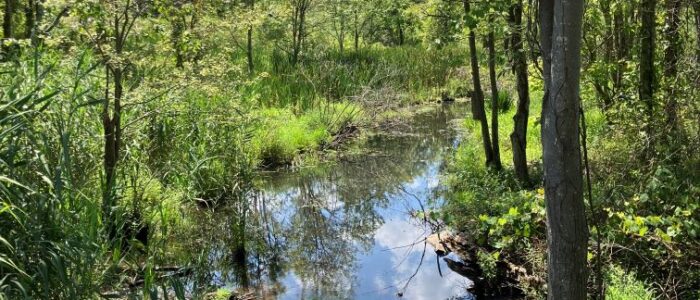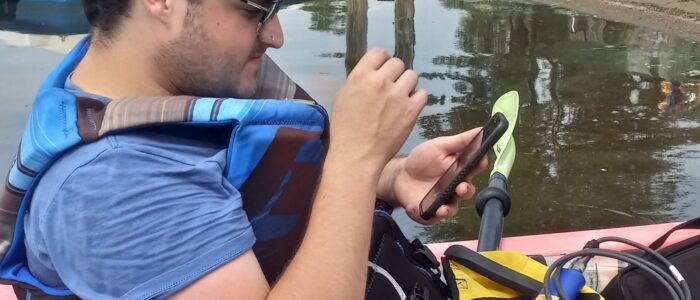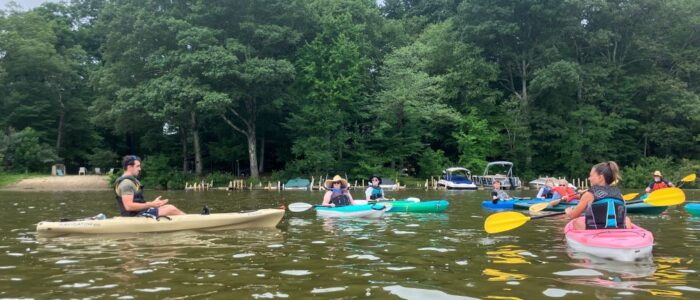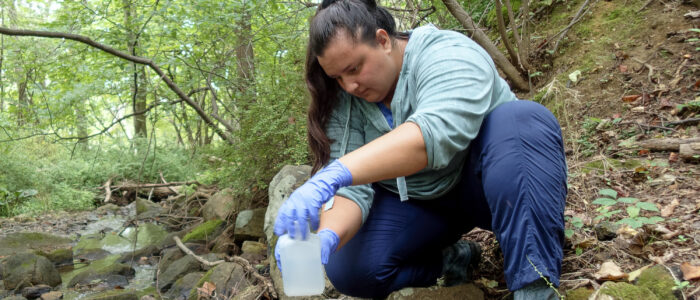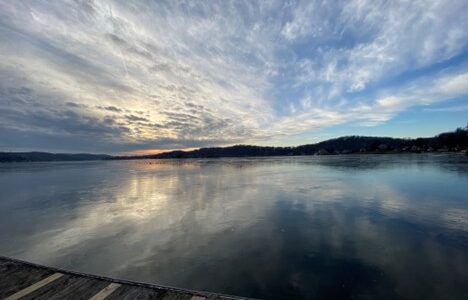Budd Lake, the largest natural lake in New Jersey, is more than just a scenic destination for paddlers and birdwatchers. It is the headwaters of the South Branch of the Raritan River, the source of a critical water supply that flows through towns, farms, and forests across central New Jersey. Protecting Budd Lake means protecting the river system that so many communities and ecosystems depend on.
Several years ago, Raritan Headwaters Association (RHA), in partnership with Rutgers University and the New Jersey Department of Environmental Protection (NJDEP), developed a comprehensive plan to protect Budd Lake and enhance water quality for the future. The resulting Watershed Management Plan outlined strategies to address stormwater pollution, reduce harmful algal blooms, and restore the health of the lake and its tributaries. With NJDEP’s official approval, the plan became a valuable tool for action—creating opportunities for funding, partnerships, and projects to  take root in Mount Olive.
take root in Mount Olive.
Since then, RHA has played a key role in turning that plan into reality. With help from the New Jersey Highlands Council, RHA is leading a detailed year-long characterization study of the Budd Lake sub-watershed. This study provides essential data on the current state of the lake and will enable us to track improvements as projects progress. The study is also identifying specific locations of the watershed most in need of restoration through a suite of biological, chemical, and habitat studies. It marks the crucial first step of implementation: understanding where we stand before we can see how far we’ve come.
The characterization study has also created opportunities for student interns from Raritan Valley Community College (RVCC). Through a successful summer collaboration, RVCC professor Emilie Stander’s lab interns joined RHA staff every other week, assisting with field sampling, water analysis, and laboratory work to complete cell counts and identify lake algae. The data gathered by these students, paired with water quality monitoring, is advancing our understanding of the dynamics of algae blooms in Budd Lake while also training the next generation of environmental scientists.
At the same time, RHA has been working closely with the Mount Olive community to implement green infrastructure solutions. Stormwater runoff is one of Budd Lake’s biggest challenges, carrying pollutants that cause overgrowth of potentially toxic algal blooms and degrade water quality. To address this, RHA has organized rain barrel workshops to help residents capture and reuse rainwater at home. By giving local families simple, affordable tools, we are reducing the amount of untreated stormwater flowing into the lake and fostering community ownership of the solution.
Engagement has also come through the water itself. Over the past year, RHA has organized a series of kayak trips on Budd Lake, bringing together municipal officials, residents, and community partners to experience the lake firsthand. These tours have provided an eye-opening perspective on both the beauty of the lake and the threats it faces, helping to build the shared commitment needed to protect it.
The approval of the watershed plan has also attracted significant external investment. Through the FY2024 Community Project Funding process, Congressman Tom Kean Jr. secured $600,000 for the Mount Olive Township Stormwater Management Project. This federal funding supports the installation of manufactured treatment devices that filter stormwater before it reaches the lake. By intercepting pollutants early, these systems will help reduce harmful algal blooms and enhance conditions for recreation and aquatic life. Along with RHA’s community engagement efforts and green infrastructure initiatives, this funding marks an important step in restoring the health of Budd Lake.
What makes the Budd Lake story remarkable isn’t just these new initiatives but the process itself. It clearly demonstrates watershed management planning in action: starting with a science-based plan, building strong partnerships, securing funding, and steadily progressing into implementation and monitoring. RHA’s leadership has been the consistent element throughout every stage—from shaping the initial plan with Rutgers and NJDEP, to securing Highlands Council support for data collection, organizing community workshops and tours, and helping Mount Olive access federal funds.
For RHA, this work reflects our mission in action: protecting the waters that sustain us by connecting science, people, and policy. And for Budd Lake, it symbolizes a brighter future—cleaner water for the community, healthier habitats for fish and wildlife, and a stronger foundation for the South Branch of the Raritan River.
The story of Budd Lake demonstrates what can happen when planning moves beyond paper and turns into action. With ongoing support from our partners and the people of Mount Olive, it is becoming a genuine success story in watershed restoration—one that will have lasting effects downstream for generations.

